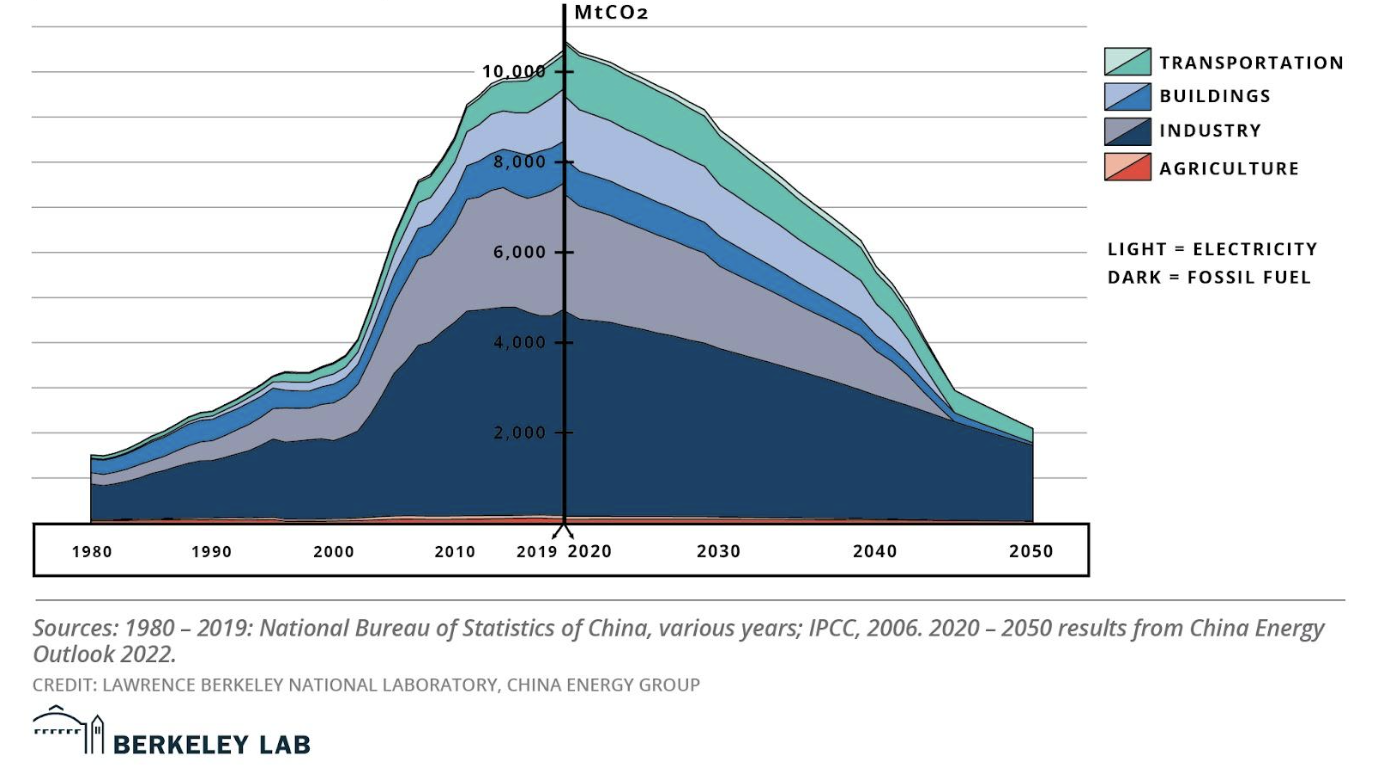The recently-released Sixth Assessment Report of the Intergovernmental Panel on Climate Change (IPCC) highlights that while many technologies and policies to significantly reduce global greenhouse gas emissions exist, immediate and deep emissions reductions in all sectors must be realized to limit global warming to 1.5℃elsius (C).
China is not only the world’s most populous nation but is also the largest energy-consuming and carbon dioxide (CO2)-emitting country in the world. In 2020, the country accounted for 26% of the world’s total energy use and 33% of the global energy-related CO2 emissions. With an eye to minimizing energy use and its effects, China has set its sights on doubling wind and solar capacity over the next eight years and fully transitioning away from fossil fuels by 2060.
The China Energy Outlook 2022, a new report published by Lawrence Berkeley National Laboratory (Berkeley Lab), looks comprehensively at recent energy use and related policy in China, using scenario modeling to evaluate potential future pathways. The report shows that in the near term energy-consuming activities in China will need to be reduced, conducted more efficiently, and produced by renewable energy sources at unprecedented levels if China is going to be successful in turning around its current upward trajectory of both energy consumption and emissions of greenhouse gasses.
China’s recent energy use and emissions trends show increases in China’s use of all fossil fuels including natural gas, petroleum, and coal. A rapidly electrifying building sector and burgeoning electric vehicle programs are powered by primarily fossil-fueled electrical generation. Industry, buildings, transport, and agriculture represented 70%, 20%, 8%, and 2% of China’s total CO2 emissions in 2020, respectively.
Recent energy and emissions goals and policies include President Xi Jinping’s notable announcement in 2020 that China's CO2 emissions will peak before 2030 and carbon neutrality will be achieved before 2060. These goals were augmented by China’s announced 14th Five-Year Plan goals and updated Paris Agreement commitments that add targets to reduce CO2 emissions per unit of gross domestic product, and increase the share of non-fossil fuel energy in total primary energy consumption. China also recently launched a national emissions trading scheme for the power sector.
Using Berkeley Lab’s China 2050 Demand Resources Energy Analysis Model (DREAM), researchers evaluated a possible “Deep Mitigation Scenario” that assumes China will fully develop and deploy deep decarbonization technologies, practices, and some behavioral changes to reduce greenhouse gas emissions as much as technically feasible by 2050, without adopting carbon capture, use, and storage at a large scale.

The primary takeaway from the China Energy Outlook 2022 is that it will be very challenging for China to reach carbon neutrality by 2050—and most likely this is an unachievable milestone even by 2060—using known commercially available and emerging mitigation technologies without carbon removal measures.
“Our modeling shows that, to reach its goals, China will need to achieve 25% net-zero energy buildings by 2030 and 60% net-zero energy buildings by 2050. More than half of the space heating in northern China will need to be electrified by 2050. Private electric vehicles will need to make up 30% of total stock in 2030 and 95% in 2050, with heavy-duty trucks reaching 95% electrification from today’s level of 0%,” said Dr. Nan Zhou, the principal investigator of the study. “In addition, the industry sector must reduce the use of coal in cement manufacturing to 25% by 2050 from its current level (87%). The steel production industry will need to employ hydrogen direct reduced iron (DRI), an emerging technology, at a 15% level by 2050. All of these changes will need to happen at a pace never seen before anywhere in the world, requiring policy changes, incentives, research and development, investment, and international cooperation.”
The Deep Mitigation Scenario shows that 2 gigatonnes (Gt) of energy-related CO2 will still be emitted by 2050, much of it from the industry sector while the power sector and buildings could be carbon free. Chemicals, ferrous metals (mostly steel), and non-metallic minerals (mostly cement and glass) manufacturing will continue to consume significant energy and produce high levels of greenhouse gas emissions. Achieving carbon neutrality will require reduction of energy demand, accelerated and increased adoption of existing technologies, additional behavioral change, and adoption of innovative but not yet fully commercialized technologies in the near term while future technologies are developed, piloted, and adopted in the longer term. Upcoming future reports will explore in-depth sectoral and thematic decarbonization strategies.
The report was authored by Nan Zhou, Nina Khanna, Jingjing Zhang, Hongyou Lu, Lynn Price, David Fridley, Jing Ke, Wei Feng, Bo Shen, Jiang Lin, and Mark Levine in Berkeley Lab’s China Energy Program (known as China Energy Group), which has been conducting informative research on energy in China for 34 years.
Please contact Hongyou Lu (hylu@lbl.gov) for copies of the CEO 2022 report.
This work was supported by the Hewlett Foundation under Lawrence Berkeley National Laboratory Contract No. DE-AC02-05CH11231 with the U.S. Department of Energy.

